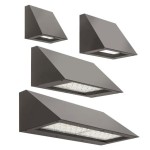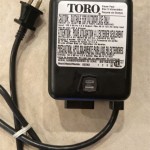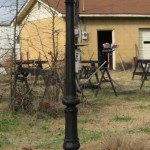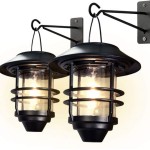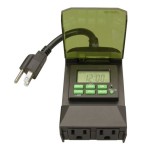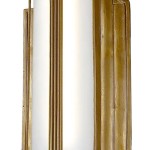Essential Aspects of LED Outdoor Lighting Equipment
The advent of LED technology has revolutionized the outdoor lighting landscape, providing numerous advantages over traditional lighting methods. When selecting LED outdoor lighting equipment, several key aspects should be considered to ensure optimal performance and longevity.
1. Wattage and Brightness:
The wattage of an LED fixture indicates the amount of power it consumes, while the brightness, measured in lumens, determines the amount of light output. Higher wattage fixtures typically consume more power but produce brighter light. Choose a wattage and brightness that aligns with the intended lighting application and area coverage.
2. Color Temperature:
Color temperature, expressed in Kelvin (K), describes the hue of the light emitted by an LED fixture. Warm white light (2700K-3000K) provides a cozy and inviting ambiance, while cool white light (4000K-6500K) offers a crisp and energizing effect. Select the color temperature based on the desired atmosphere and visibility requirements.
3. Beam Angle:
The beam angle determines the spread of light emitted by an LED fixture. Narrow beam angles (e.g., 10-30 degrees) concentrate light into a focused beam, ideal for accent lighting or spotlighting. Wide beam angles (e.g., 60-120 degrees) disperse light over a larger area, providing general illumination.
4. Durability and Ingress Protection (IP) Rating:
Outdoor lighting equipment must withstand harsh weather conditions. Look for fixtures with high IP ratings, such as IP65 or IP67, which indicate their resistance to water and dust ingress. Durable materials like aluminum or polycarbonate ensure longevity and protect against corrosion and impact.
5. Energy Efficiency:
LED fixtures are inherently energy-efficient, consuming significantly less power than traditional lighting sources. Choose fixtures with high lumen-per-watt ratios, which indicate greater light output for the same energy consumption. This reduces energy costs and contributes to environmental sustainability.
6. Dimming Capability:
Dimmable LED fixtures allow for adjustable brightness, providing flexibility in lighting levels. Dimming controls can enhance ambiance, create mood lighting, or reduce energy consumption during off-peak hours.
7. Motion Detection:
Motion-activated LED fixtures automatically turn on when motion is detected, providing security and convenience. They reduce energy wastage by only illuminating when necessary, particularly in areas with low foot traffic or during nighttime hours.
Conclusion:
Selecting the right LED outdoor lighting equipment requires careful consideration of various aspects, including wattage, brightness, color temperature, beam angle, durability, energy efficiency, dimming capability, and motion detection. By considering these factors, you can choose fixtures that meet your specific lighting needs, enhance aesthetics, increase safety, reduce energy consumption, and ensure long-lasting performance.

Pro Led Outdoor Landscape Lighting 12 Spot Light Kit 100watt Power Pack Photocell Mechanical Timer 160 Foot Cable

Led Landscape Lighting Kit 6 Integrated Spotlights Low Voltage Transformer Super Bright Leds

Rgbic Led Garden Lights Kit For Outdoor Landscape Lighting

Pro Led Outdoor Landscape Lighting 12 Spot Light Kit 100watt Power Pack Photocell Mechanical Timer 160 Foot Cable

What Are The Common Outdoor Light Fixtures Dongguan Leysun Co Ltd

Outdoor Lighting Philips

New Outdoor Lighting S For Summer 2024 08 01 Architectural Record

Sharp To Introduce Ten New Outdoor Led Lighting S Including Solar Powered Models Press Releases

10w Outdoor Lighting Quality Spot Led Garden Waterproof Lawn Light China Made In Com

What Is Outdoor Led Par Cans Light Rgbwa Uv 6 In 1 Dmx Wireless Battery For Disco Dj Stage Lighting Equipment
Related Posts
